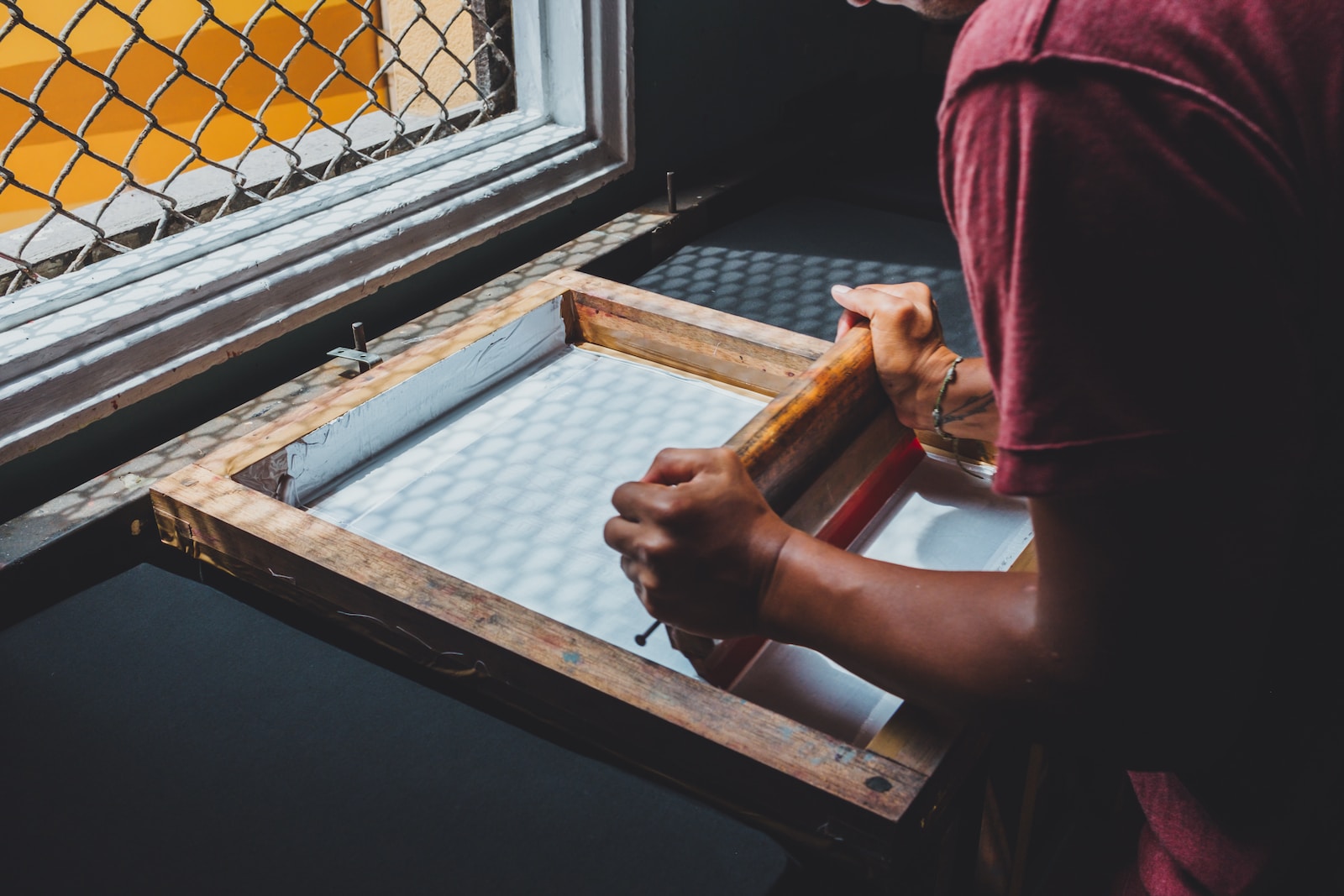An Overview of Painting Techniques: The Artistic Palette
The art of painting, a profound manifestation of human creativity, employs an extensive array of techniques to breathe life into raw canvas. From the delicate intricacies of pointillism to the identifiable strokes of impressionism, each technique is a distinct thread in the vast tapestry of visual art. Yet, regardless of style or era, paintings are united by a common element: the observation and representation of light.
In their barest form, paintings are about perception—how we discern forms, gauge depth, and perceive color—all fundamentally shaped by light’s interaction with surfaces. To convincingly convey this on a two-dimensional plane requires mastery over numerous painting techniques.
The Pivotal Role Of Light And Shadow In Painting: The Chromatic Symphony
From ancient cave sketches to modern digital artistry, the interplay between light and shadow has remained central to visual storytelling. This judicious use is akin to a chromatic symphony where every stroke articulates an artist’s understanding and manipulation of light. Light defines how we see—illuminating subjects while casting others into shadow.
It can soften or accentuate textures; shift colors from warm to cool; enlarge or condense spaces. It is more than an environmental factor—it’s an artistic tool wielded with precision and purpose by artists throughout history.
Unveiling Chiaroscuro And Tenebrism: Two Genres In Spotlight
Chiaroscuro and tenebrism are two such techniques that capture this ethereal dance between light and shadow on canvas – each unique yet intertwined in their exploration of darkness and illumination. Derived from Italian roots–’chiaro’ meaning clear or bright and ‘scuro’ meaning dark or obscure–Chiaroscuro is lauded for its fluid transitions from light to dark that provide depth and volume to two-dimensional artwork. On the other hand, tenebrism, derived from ‘tenebroso,’ latin for gloomy or dark intensifies chiaroscuro by presenting dramatic contrasts between lit areas against predominant darkness—an embodiment evoking intense emotionality within compositions.
Understanding Chiaroscuro: A Dance of Light and Shadow
The world of painting is filled with intricate techniques that define and differentiate styles, periods, and artists. To comprehend the full scope of this artistic universe, it is crucial to delve into one such mesmerizing technique, Chiaroscuro.
Derived from the Italian words ‘chiaro’ meaning clear or bright, and ‘scuro’, meaning dark or obscure, Chiaroscuro serves as an artistic metaphor for life itself – a subtle interplay between light and shadow. It introduces a 3-dimensional depth in 2-dimensional paintings through a meticulous balance of brightness and darkness.
The Italian Roots: Painting’s Enlightened Era
The inception of Chiaroscuro traces back to the Renaissance period when art began to mirror reality more perceptibly. Artists sought ways to enhance their work’s realism, leading to this technique’s birth. Its development reshaped painting conventions by introducing an elevated understanding of light’s role in replicating reality on canvas.
This new approach enabled artists to manipulate light intensity on varying surfaces, thereby creating a sense of volume and defining object boundaries. The beauty lies in its seamless blend where it becomes almost impossible to locate the transition point between light and shadow.
Chiaroscuro’s Luminary Pioneers: Masters of Light
Leonardo da Vinci, widely recognized as a polymath genius, was among the first adopters who astutely used chiaroscuro in his works. His painting “Mona Lisa” showcases exquisite detailing by subtly blending tones around her face creating depth that transforms her enigmatic expression into a lifelike form. Famed Baroque artist Caravaggio took chiaroscuro into unexplored territories using strong contrasts between extreme lights and darks within his dramatic compositions; Caravaggio’s rendition altered viewer perception by making figures appear more voluminous yet dramatically spotlighted against pitch-dark backgrounds.
Dutch master Rembrandt van Rijn achieved an even greater mastery over this technique during the golden age of Dutch art. His intelligent use of chiaroscuro led viewers through his compositions with pools of brightness amidst darkened matter thus emphasizing key narratives within his paintings like “The Night Watch”.
A Study in Contrast: Masterpieces under Microscope
To appreciate chiaroscuro fully requires delving into its application within notable works where artists have exploited this technique extensively. Rembrandt’s “The Night Watch” serves as an excellent example where he has lavishly used chiaroscuro for dramatic impact while guiding attention towards specific areas.
In “The Night Watch”, Rembrandt bathes his main subjects with warm radiant light while sinking insignificant elements into the shadows thereby steering viewer focus towards central figures. The careful manipulation not only provides volume but also sets emotive tones throughout the composition enriching overall narrative quality.
A Deep Dive into the Definition and Origin of Tenebrism
The term ‘Tenebrism’ originated from the Latin word ‘tenebrae’, meaning darkness. Its etymological roots aptly reflect its artistic concept revolving around dark shadows.
Emphasizing one of the principles of chiaroscuro, Tenebrism intensifies the contrast between light and dark, with darkness often being a dominating element in paintings. Developed in the late Renaissance and early Baroque periods, tenebrism became a significant component of 17th-century Spanish painting.
It was also widely adopted by Italian and Dutch artists. This technique rendered dramatic scenes that were both compelling and emotionally intense, creating an unprecedented sense of realism in art.
The Principles Behind Tenebrism: Transitions into Darkness
Tenebristic paintings are characterized by their dramatic and violent transitions from light to shadow. Unlike chiaroscuro’s soft gradations, tenebrism employs abrupt contrasts where light serves as an illuminating revelation amidst overwhelming darkness.
These stark juxtapositions sculpt the subjects with a sense of volume and depth, engendering an almost theatrical drama on canvas. The illuminated parts seem to emerge from the obsidian abyss, ingraining a profound emotional impact on viewers’ perception.
Eminent Artists Known for Using Tenebrist Technique
Once again featuring prominently is Caravaggio among artists known for using tenebrist techniques. His innovation is even recognized as “Caravaggisti” or “Caravaggesque” style – characterized by strong contrasts between light and dark to achieve volumetric forms under spotlight against largely obscure backgrounds. Other eminent artists include José de Ribera who brought this technique to Spain with his intense religious works that featured emotionally charged characters enveloped in deep shadows; Gerrit van Honthorst, a Dutch artist influenced by Caravaggio’s style during his stay in Rome, incorporated it successfully into his genre scenes as well as religious subjects.
An Exploration into Notable Works Featuring Tenebrist Technique
A quintessential example showcasing tenebrist technique is Caravaggio’s “The Calling of Saint Matthew”. The divine hand pointing towards Matthew emerges from near-darkness while Matthew himself seems taken aback by this sudden apparition – evoking an immediate emotional response. Ribera’s “Martyrdom of Saint Philip” boasts another masterful application where saint Philip tied to a tree trunk stands out dramatically against an almost pitch-black background – highlighting both mental strain and physical torment experienced by him; Honthorst’s “The Denial of Peter” uses stark lighting contrast to draw attention towards Peter’s regretful denial – eloquently portraying human frailty amidst spiritual crisis on canvas.
A Comparative Study: Chiaroscuro and Tenebrism
The Dance of Light and Shadow Across Two Styles
In the heart of both Chiaroscuro and Tenebrism lies the captivating interplay between light and shadow. Both these techniques underscore the importance of this duality, utilizing it to construct depth, suggest volume, establish mood, and impart a certain realism to their art pieces.
They are similar in their pursuit of dramatically illuminating specific aspects of a composition while allowing others to fall into shadow, though the degrees to which they employ these tactics vary distinctly. Chiaroscuro is more gentle in its approach – it is an elegant dance between varying degrees of light and dark.
The contrast exists but is subtle; transitions are gradual; shadows seep into light areas slowly, creating a multi-tonal effect that adds richness and depth without starkly polarizing elements. In contrast, Tenebrism is more dramatic – it’s akin to a passionate tango where shadows dominantly consume large portions of the canvas only broken by sudden intense bursts of directed light.
Final Brush Strokes: An Artistic Conclusion
Paying Homage to the Masters through Appreciation
In essence, Chiaroscuro can be seen as an exploration technique that gently astonishes its audience with its finesse while Tenebrism shocks them into awe with its audacity. Through this exploration we do not only appreciate how artists have harnessed light and shadow but also how they have subtly shifted their narratives through these techniques. Their masterful employment has undoubtedly elevated the standard for visual storytelling in the realm of fine art.
A greater understanding of such historical techniques offers us assurance that as long as there are artists who continue to push boundaries as da Vinci or Caravaggio did centuries ago; art will persistently evolve, always finding fresh ways to captivate us through elements as modest yet profound as light and shadow. As these celebrated masters knew well – sometimes it’s not just about what you depict on your canvas but how you portray it – how you cast your ‘light’ upon it.



